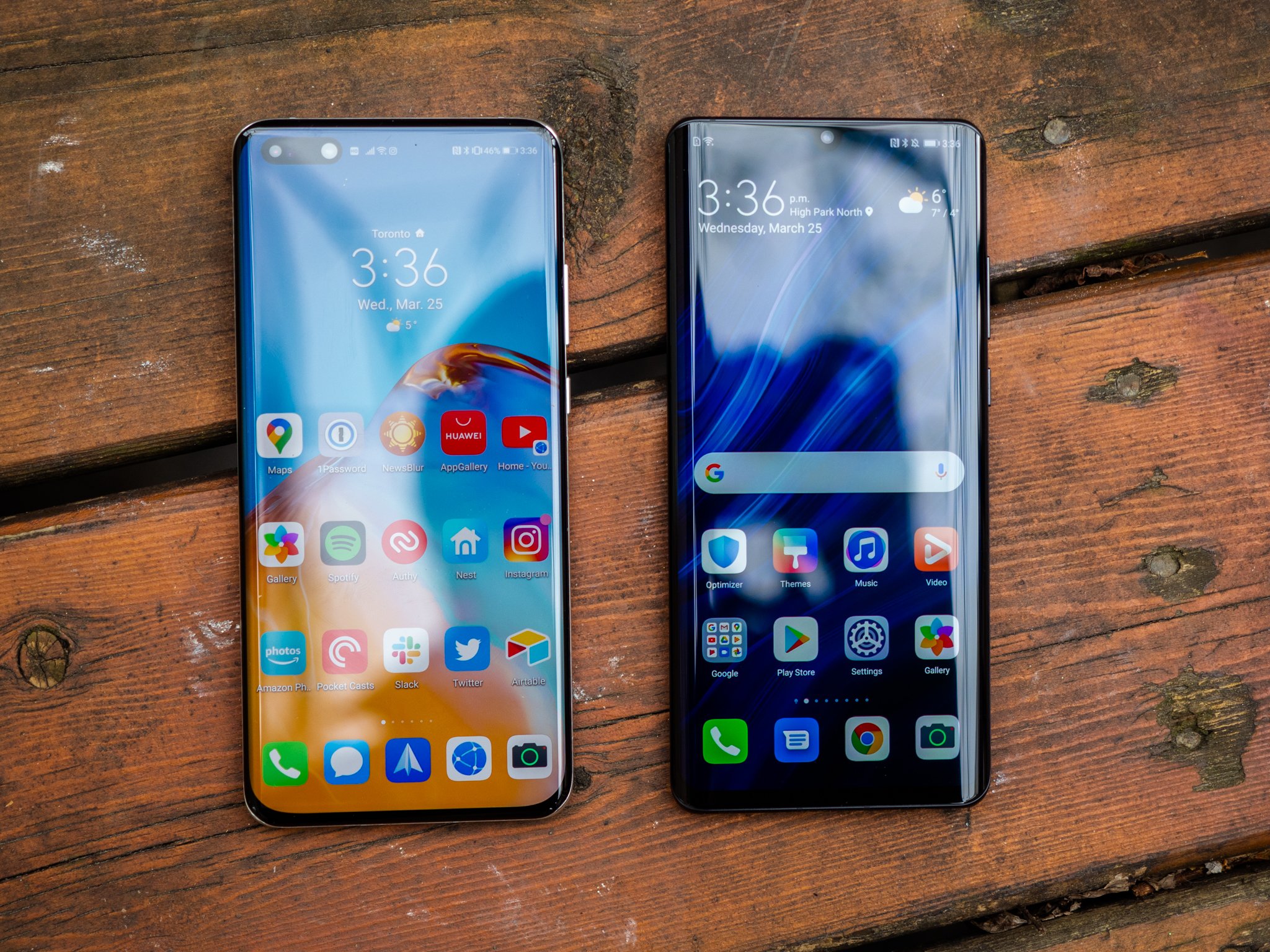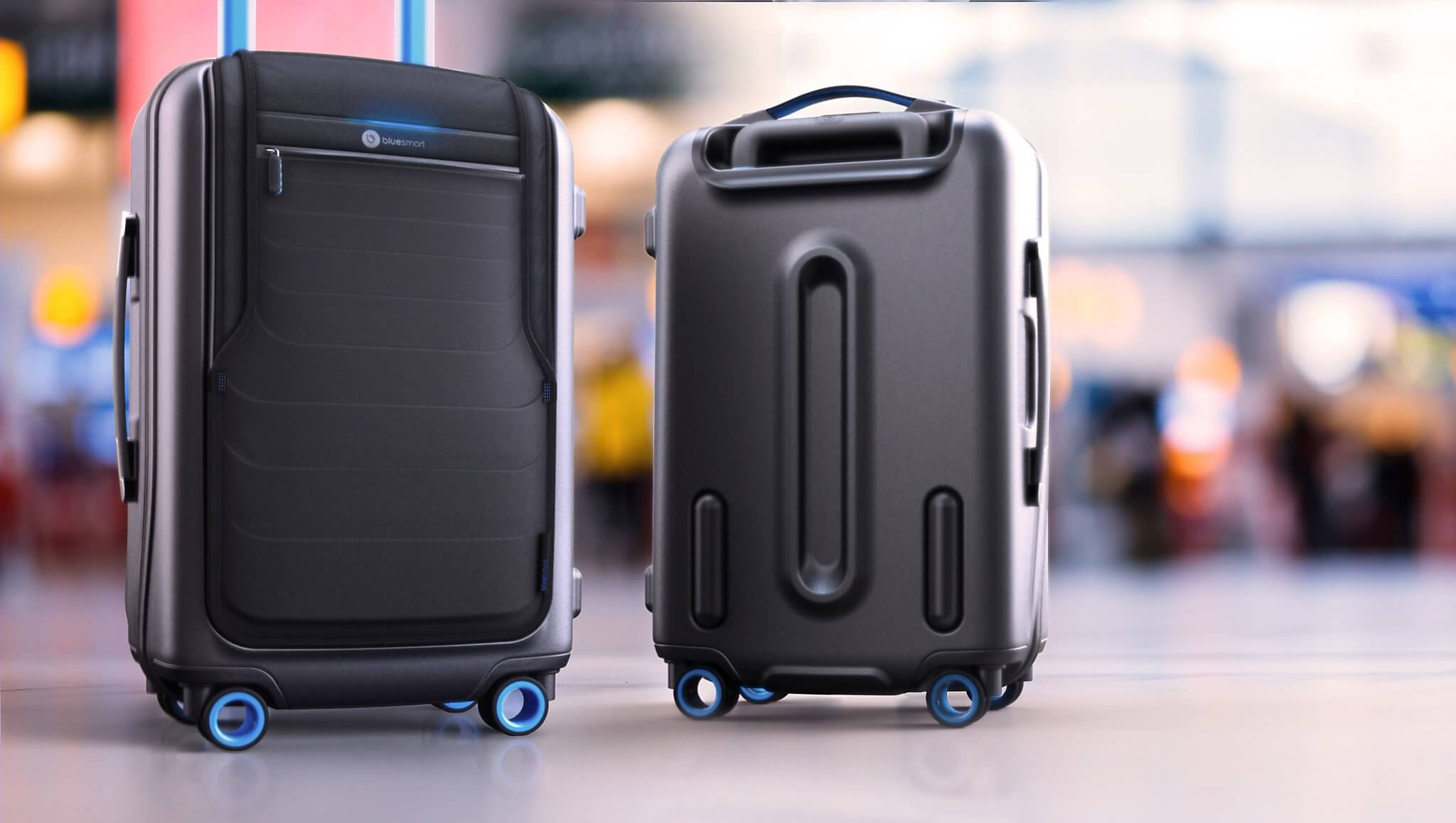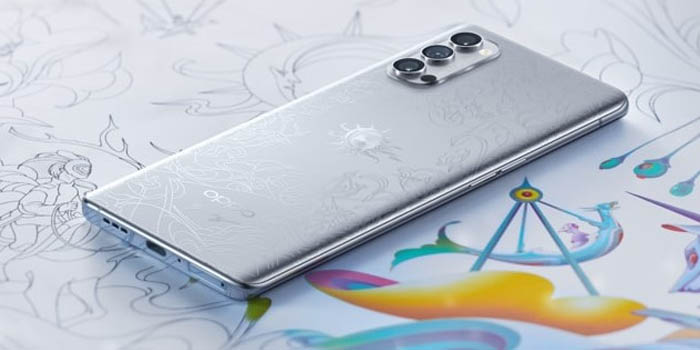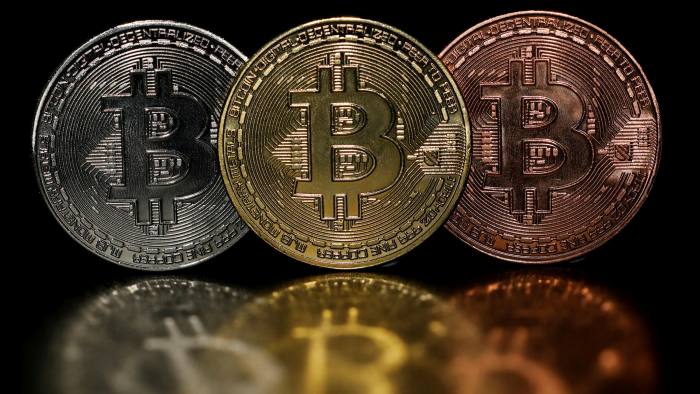Search result

After Samsung and Huawei's foldable smartphones, and other smartphone manufacturers trying to hide the notch, Chinese giant Xiaomi took a completely impossible path altogether. The company unveiled the Mi Mix alpha, a smartphone with a front display that fully wraps around the back. The device is made of a single piece of sapphire glass with ceramics and aerospace-grade titanium allow. So what does the extra display get you? Nothing new in fact. The back display lights up and takes over the front screen's duty when you flip the phone.
Xiamoi says that the Mix alpha is a concept phone, so it is going to have a limited number of sets. The smartphone will go on sale in China in December for $2,800. While the size of the display is unknown, it boasts a 180.6% screen-to-body ratio. The device is powered by a powerful and greatest snapdragon 855+, coupled with 12GB of RAM and 512GB UFS storage. It also supports 5G network support. The device features a 4050mAh battery and supports a 40W wired fast-charging, the company claimed. The Mi Mix alphas is running android Pie-based MIUI 11 software.
The front side of the display doesn't have any camera. Instead, there is a three-camera system at the rear side: a 108MP primary sensor is developed in collaboration with Samsung, a 20MP wide-angle camera sensor and a 12MP telephoto sensor. At the event, Xiaomi also launched the Mi 9 Pro, the follow up the MI 9 handset that the company unveiled earlier this year. The Mi 9 Pro which is almost priced at $250. It is one of the low-cost devices to support the latest 5G network. It also supports 40W fast charging.

At one point, it looked like 2020 would be a bad year for Huawei everywhere outside of the company's home country of China. The tech firm has endured eighteen months of consistently terrible press in the United States of America and Europe, and although it has consistently and angrily denied that it uses its equipment to spy on western nations, the accusations have stung its performance when it comes to sales. After Donald Trump's administration took the unprecedented step of putting the company on the 'Entity List' - effectively a blacklist - there appeared to be no way for Huawei to stay active in western markets. Huawei might now have found a way to avoid that becoming the case.
The main difficulty faced by Huawei under the terms of the blacklisting - or so it appeared - is that it wouldn't have access to Google apps. The entire Google Play store would be off-limits to the manufacturer, which would leave users unable to install or use many of the apps that smartphone users now take for granted. This would include hugely popular communication tools like WhatsApp, and also the apps used by social media networks like Twitter and Facebook. Even accessing social media sites using a web browser would have been difficult, as the majority of web browsers also come in the form of apps that can only be downloaded through the relevant store.
Mobile gamers would also have been affected by the ban. Games like PUBG and Fortnite, as well as the Call of Duty franchise, have had their apps downloaded millions of times through Google Play. Playing games through new Huawei phones would have been almost impossible. Non-app based games, such as online slots or casino games, wouldn't have been affected in theory. Users would still have needed a web browser to gain access to online slots websites, though, and so even they may have remained off-limits. In practice, it would have been hard for users to play paypal slots, play any other games, or perform any activities beyond basic calling and texting. It would have been impossible to justify spending full price on a phone handset that didn't have these features - but now, all of these features may be back on the menu.
According to reports that have appeared in the press this week, Huawei is looking to exploit a loophole in the blacklist ruling. They may not be able to gain access to Google's Play Store, but they might instead be able to place apps in their own 'App Gallery' - and it's thought that Google might grant them permission to place Google apps inside App Gallery and allow users to gain access to them anyway. Google is understood to be keen to continue co-operating with Huawei, and so if the loophole exists, then they're unlikely to take any steps to prevent Huawei from making use of it. The most recently released Huawei smartphones have arrived without core Google apps like Maps or Gmail pre-installed, but affected users may soon be able to download the apps through App Gallery and continue as if the problem didn't exist.
Within Huawei, this is seen as a preferable alternative to attempting to proceed with their own operating system. Huawei can't currently make use of the latest versions of Android, and spent money in 2019 developing an alternative OS called 'Harmony.' The new OS is yet to appear on any Huawei-built smartphone, with the manufacturer instead deciding to continue using the most recent version of Android that it still has access to. This may yet cause issues in the future when Android eventually stop providing support for outdated versions of the software in favor of upgrading more recent builds and producing future variants. The 'open source' version of Android that they have access to is in itself contentious, and if US lawmakers have their way, they may yet lose access to it in the future.

If Google agrees, it wouldn't be the first time they've granted permission for their apps to be used in places where users wouldn't necessarily expect to see them. As Apple users are aware, almost all of Google's apps can currently be downloaded through Apple's app store even though Apple and Google are, metaphorically speaking, at war with each other in the smartphone market. It appears that Google's priority is to make their software available to as many users as possible as opposed to restricting access to only those devices that run approved versions of Android. If they agree to this request, then there would theoretically be little difference between a Huawei phone and, for example, a phone made by Samsung when it comes to app availability, and the impact of the ban would be almost totally nullified.
This isn't the only way that Huawei appears to be getting around at least some aspects of the ban. The terms of the blacklisting specifically prohibit firms from the United States of America from doing any business with Huawei whatsoever, and yet their P40 phone has been found to contain parts built by several different American manufacturers. The P40 was released long after the terms of the ban came into effect, and so it's not yet known whether any of the companies who have seemingly provided parts or technology to Huawei are in breach of prohibition. Theoretically, there should be no US-built components in any Huawei phones, but their presence suggests that the company has found a way to incorporate them anyway. One possible explanation is that the parts were initially sold overseas to a company that isn't covered by the ban. The overseas company would then be free to sell the parts on to Huawei without being encumbered by US law.
Although Huawei reported a loss of around ten billion US dollars last year in the wake of being blacklisted, it's clear that the company has no intention of giving up its presence in American or European markets. Given that it will be involved in the rollout of the 5G network in the United Kingdom, it may even gain more ground in the twelve months to come. Huawei was definitely knocked down by the ban, but they weren't knocked out, and in coming back, it's conceivable that they may ultimately become even stronger than they were before.

Black Shark isn't just any other smartphone. It is a power back specifically designed to play mobile games for users who love to play games on their smartphones. The device launched in China as the company's third gaming smartphone for this year. The company also partnered with Tecent games. The phone comes in two colors - sky fall black and crystal blue. It will be available in 12GB RAM with 128GB, 256GB, and 512GB internal storage options. They are priced at $573, $616, and $687 respectively.
The newly launched device comes with the powerful Qualcomm Snapdragon 865 chipset paired with LPDDR5 RAM and UFS 3.1 storage. The device features a 6.67-inch AMOLED display with a 120Hz refresh rate, 270Hz touch sample rate. The phone is optimized for playing games, comes with a blue light filter, and an in-display fingerprint sensor. The company uses its gaming engine that was built in-house and Tecent SolarCore to deliver the best gaming experience possible. The phone has a similar design as its predecessor from H1 2020. That means we will be getting another heavy and big smartphone with an asymmetric triangle module at the rear side for the four cameras and charging pins.
The phone runs Joy UI 12 based on Android 10 which is a slightly modified user interface by Xiaomi. The black shark 3 and black shark 3 Pro that was released earlier this year will get an update to this software shortly as well. The phone is backed by a 4,700mAh battery with support for 65W fast charging via USB Type-C and 18W magnetic charging. The phone comes with four camera setup that includes a 64MP (wide) + 13MP (ultra-wide) + 5MP (depth) triple camera setup, 20MP selfie camera. The device uses a sandwich liquid cooling system to keep the phone cool while you are playing games on it.

HMD Global is about to release the Nokia 9.2 and just before its launch its predecessor Nokia 9 PureView gets the price cut. The Nokia 9 Pure view is now starting from Rs. 35,000 in India that comes with 8GM RAM and 128GB internal storage. For some reasons, HMD Global decided to skip the 9.1 entirely and moved to 9.2 instead. There is no confirm news about its price but rumors suggest that it will be the first Nokia phone with 5G support and may cost around $600 with 256GB storage.
The Nokia 9 pure view had a crazy Penta-camera setup which promised to capture 10 times more light than a single camera sensor. However, the camera failed to live up to the hype and HMD Global decided to return to more standard camera configuration and moved to a higher level of a megapixel. Another rumor suggests that this will be an under-glass 32MP front-facing camera making the 9.2 the first phone to use this technology.
The device will be powered by the powerful Snapdragon 865 processing chip and will support 5G network connectivity. Recently BenGeskin released the pictures of possible renders of Nokia 9.2. According to the pictures, the smartphone has almost no bezels on the front. The back design uses the Oreo rear quad-camera system instead of the standard camera array. As per the news, the phone will use the Android 10 operating system. Other rumors suggest that the phone will be using 8GB RAM with 128GB internal storage.
Nokia 9.2 also sports a P-OLED display. The screen has a resolution of 1440 x 2560 pixels and 490 PPI pixel density. For the front camera, the phone is using a 24MP camera lens. On the rear, it has four cameras all 13MP. The rear cameras have features like Digital Zoom, Auto Flash, Face detection, Touch to focus, etc. This device runs on a big 4500 mAh battery but there is no information on the fast charge capacity. For connectivity, it comes with WiFi, Bluetooth, GPS, Volte, NFC and more.

Smart Suitcase... will be a very common term in the upcoming months. As Samsonite and Samsung are joining forces in a partnership to come up with a new technology aimed at bringing a new smart luggage concept, suitcases fitted with microchips, allowing you to track them using GPS.
"Smart luggage will be able to communicate with you but it needs to be able to do much more than just give its location, We are working with Samsung to create something that is more than a gimmick." - said Samsonite chief executive Ramesh Tainwala.
He revealed that in the future the luggage might even be capable of sending you a message when it has left the aircraft, about to appear on a baggage carousel, as well as when it is being opened. In addition, they are working on a solution that will see the luggage follow its owner automatically. It's a blue sky idea where your bag will be following you 6 inches behind like a programmable remote control car. Let's wait and see what these two giants firms will bring us.

A few days ago, Oppo launched a limited edition of its Oppo Reno 4 Pro smartphone in its home country China. The phone is touted as Oppo Reno 4 Pro Artist limited edition. Now, the smartphone is officially available in the market for the purchase. The phone is available for $622, which is rough converts to 4,299 yuan. The phone features 12GB RAM and a 256GB internal storage variant. The phone can be purchased through the company's official website. The internal specification of the phone is the same as Oppo Reno 4 Pro except for the design of the cover painted by James Jean, a Taiwanese-American artist known for its cover art for Marvel Comics and DC comics. For the Reno 4 Pro, he created a unique art depicting the summer carnival of dreams with a mystical creature logo.
The design is etched on the phone's rear AG glass with a SoleLuna logo at the center as it was the name of the project. The smartphone also features two dedicated themes to align with the design at back. The smartphone is available in silver color which isn't included in regular Oppo Reno 4 color options provided by the company earlier. To complement the artwork, the phone comes with themed earphones, case, and 65W super-fast charger.
Oppo Reno 4 Pro has a Super AMOLED 6.5-inch display with 1080 x 2400 pixels. The device comes with corning gorilla glass 5 protection. The phone is based on Android 10 and colors 7.3 on the top of the operating system. The Oppo Reno 4 Pro is powered by the Qualcomm SM7125 Snapdragon processor and Adreno 618 GPU. The phone comes with a quad-camera system at the rear side with 48-megapixel wide camera lens, 8-megapixel ultra-wide-angle lens, 2-megapixel macro lens, and a 2-megapixel depth lens. For selfie, you get a 32-megapixel camera lens. You can shoot 4K videos at 30fps or HD video up to 120 fps, which allows you to shot in slow-motion. The phone comes with a 4,000mAh battery and 65W fast charging that allows you to charge the phone up to 60 percent in just 15 minutes.

From the creation of the world wide web to where the digital world is at now, the transformation has been incredible. The accessibility of technology has enhanced the digitalization of payment with finance no longer restricted to cash and the cheque book.
The digitalization of payment can be seen most pertinently in the rise of online gambling. With digital payments now completing transactions in seconds, the global online gambling market is expected to hit $94 billion of value by 2024 - double the current market size. A quick financial transaction for the best sports betting usa sites that are available at the touch of a fingertip from the comfort of your own home has ensured that the number of online bettors continues to ascend.
Indeed, an Online Casino Reports study in 2016 found that leading online casino and sports betting sites like www.oddshunter.ca were receiving almost 2000 visitors per day with hard cash no longer an issue.
This infiltration of technology and digital payments into everyday life has increased the likelihood of a cashless world as digital takes over the world of finance. But, just how has it done this?
The original and modern internets
Although stating the obvious, digital payments can only occur when there is an internet connection. It was 1969 and the creation of ARPANET (Advanced Research Projects Agency Network) that set the ball rolling for the modern internet. It was the first time that the TCP/IP protocol suite had been used.
Though revolutionary, it hardly set the world alight and so it was up to Sir Tim Berners-Lee to develop the World Wide Web twenty years later. Hyperlinks were merged with web pages and sites that made digital payments realistic.
Online payments with eservices
Online payment services began with an important if troublesome development in 1994. The Stanford Federal Credit Union developed an online internet banking system - the first of its kind - yet it failed to hit the mark with the ordinary man in the street. Specific knowledge of data transfer protocol was needed, making the service difficult to use.
The 1990s, however, played an essential role in the rise of epayments. The likes of Millicent, ECash and CyberCoin began to provide ecash, digital tokens or tokens as cash alternatives in an attempt to digitalize payment. Ecommerce mogul Jeff Bezos created Amazon in 1994 too.
Paypal and Apple Pay
Now a frontrunner in epayment, Paypal has only been around since 1999. It took the service a while to get going, but once ebay users latched on to its ease of payment methods, Paypal usage rocketed. Different currencies and methods to reduce fraud have reinforced Paypal's superb reputation, and, as a result of its enormous growth, the service was given an EU banking license in 2007.
Even then though, digital payment is forever adapting and morphing into new and exciting projects. Apple Pay, launched in autumn 2014, allows iPhone users to scan their fingerprint to purchase goods. Google and Amazon have also made huge strides by improving wallet functionality and the ability to gamble online.
Where the future of payment lies
It's often described as a complicated service, but Bitcoin seems to be where digital payment is heading. Its creation in 2009 saw something important finally be realized: the success of a decentralized finance currency doubling spending in the absence of a central server or trusted body. Bitcoin thus took epayment into previously uncharted territory, and can certainly be considered as the future of digital payment.
Digital payments have come a long way since the Stanford Federal Credit Union's attempts to found an online banking system in the early 1990s. But, the development of the modern internet and the consistent evolution of epayment services from Paypal to Apple Pay to now cryptocurrency, means a cashless society is no longer a fantasy. In fact, if bitcoin and the like continue their rapid growth, it could be a lot sooner than what most people think.
© 2023 YouMobile Inc. All rights reserved






